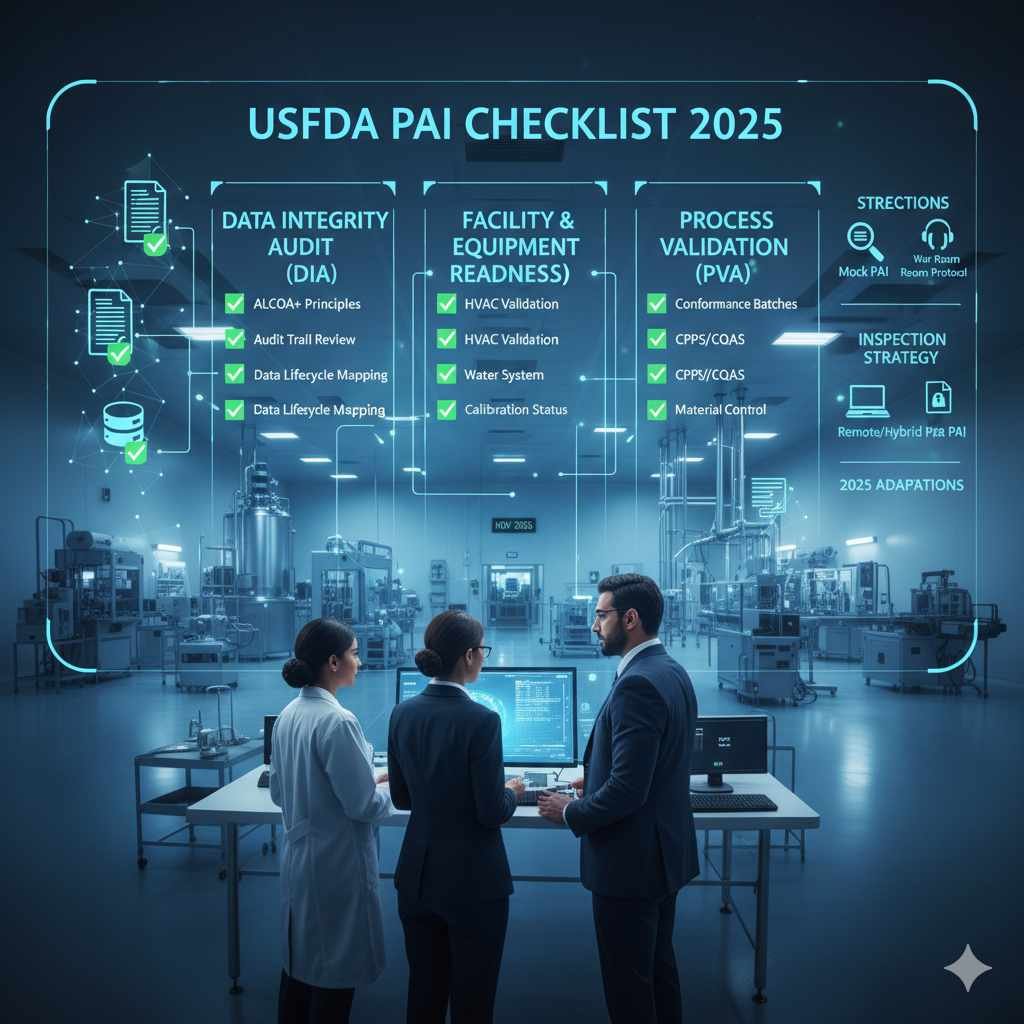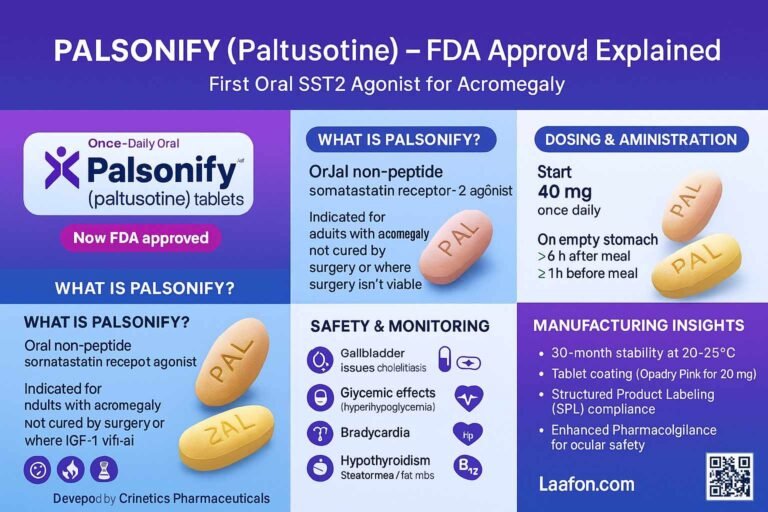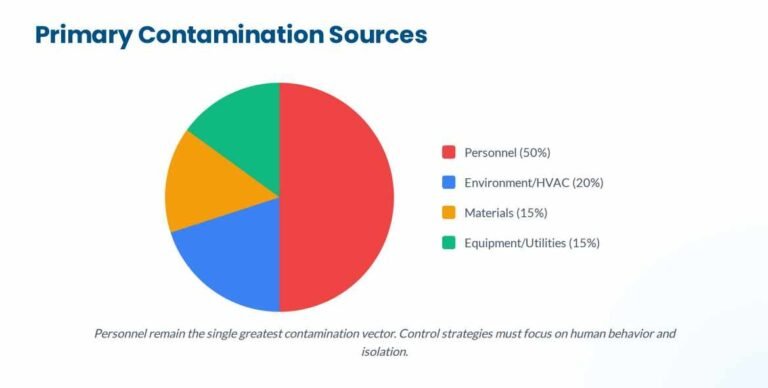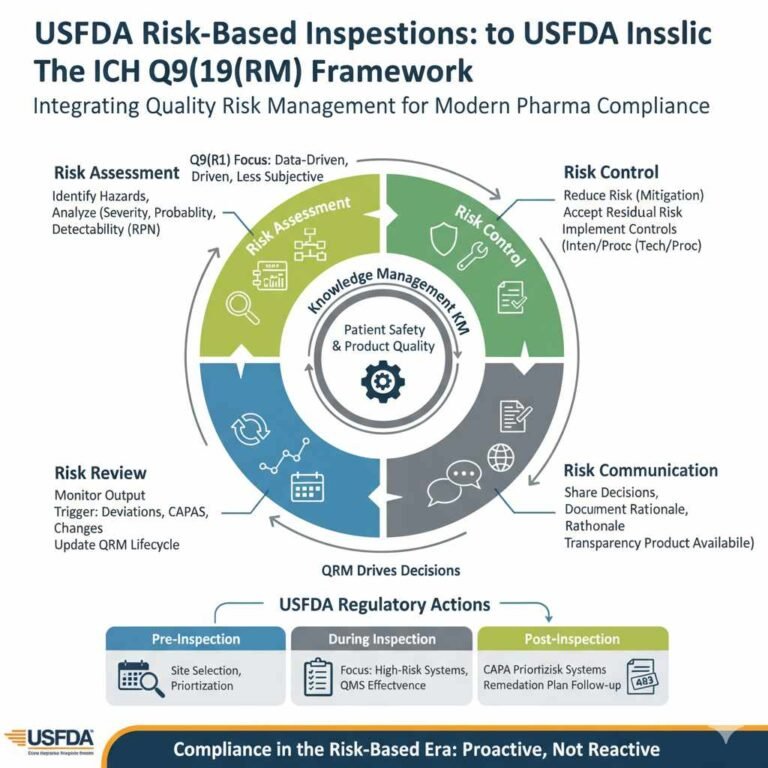As the pharmaceutical landscape evolves, so too does the rigor of the U.S. Food and Drug Administration’s (FDA) oversight. The Pre-Approval Inspection (PAI) e.g. USFDA PAI checklist remains the critical gatekeeper, serving two primary objectives: to verify the authenticity and accuracy of the data submitted in the New Drug Application (NDA) or Abbreviated New Drug Application (ANDA), and to confirm the facility’s overall state of Current Good Manufacturing Practice (cGMP) compliance for commercial production.
This guide, synthesized from official FDA guidances (such as CPG M 7346.832), recent industry compliance reports, and best practices for the 2025 regulatory environment, establishes the new definitive standard for PAI readiness. It moves beyond generic cGMP checklists to provide actionable, focused strategies essential for a successful outcome.

The Regulatory Mandate
The FDA’s PAI program is not a general cGMP audit; it is a focused investigation driven entirely by the marketing application. Understanding this focus is the first step toward readiness. The inspection is traditionally structured around three core objectives:
- Data Integrity Audit (DIA): Verification that the data supporting the application (stability, process validation, analytical methods, non-clinical, etc.) is accurate, reliable, and trustworthy.
- Facilities and Equipment Review (FER): Confirmation that the site, equipment, and utilities are capable of reproducible commercial-scale manufacture as described in the application.
- Process Validation Audit (PVA): Assurance that the proposed commercial manufacturing process is in a state of control and yields a product meeting all quality attributes.
💡 2025 Strategic Gap Filler: The modern PAI increasingly links these three areas through data lifecycle mapping. Readiness is no longer just about having the right documents; it’s about demonstrating the complete, unbroken, and attributable journey of every critical data point from its generation (SOPs and validation) to its inclusion in the application (regulatory submission).
Phase I: PAI Readiness Program – Six Months Out
Achieving PAI readiness is a multi-month, cross-functional project, not a cleanup operation.
1. The Multi-Tiered Mock PAI Strategy
The most significant gap in standard readiness guides is the lack of a structured, deep-dive mock inspection protocol.
| Mock PAI Tier | Objective | Focus Area & Authority Cited |
| Tier 1: Internal Gap Assessment | Baseline cGMP compliance check. | Standard cGMP and internal SOP adherence. |
| Tier 2: The “Submission-to-Floor” Drill | Traceability & Data Verification. | Connect every batch record/CoA/stability data point cited in the NDA/ANDA back to the raw data and laboratory analyst notebook. Simulate the DIA. |
| Tier 3: External Regulatory Consultant Mock | Inspection Behavior & Wording. | Focus on interview responses, document presentation protocol, and 483 risk assessment by a third-party expert using current FDA enforcement trends. Uncover ‘Blind Spots.’ |
2. Digital Compliance and the Controlled Document Center (DCC)
In 2025, the DCC is a digital hub, not a binder room.
- Audit Trail Review: Conduct a focused audit of audit trails for all GxP-critical systems (LIMS, Empower, SCADA, ERP). Focus on identifying any unexplained deletions, time-stamped modifications outside of expected processes, or “phantom users.”
- PAI-Specific Document Index: Create a Master Cross-Reference Index that maps every key document (e.g., Validation Report VR-007, Batch Record BR-101) directly to the corresponding eCTD section and table number. This demonstrates control and efficiency to the investigator.
- PAI Document Freeze Protocol: Implement a temporary Change Control Freeze on all critical PAI-related documents (Validation Master Plan, key SOPs, Batch Records) 30-45 days before the expected inspection window. This ensures the site is not operating under documents that differ from those the FDA will inspect.
Phase II: The Exhaustive PAI Checklist – Core Sections
This section presents the high-priority checklist items the FDA focuses on, integrating the latest regulatory requirements and best practices.
3.1 Data Integrity (DI) and Electronic Record-Keeping
Data integrity remains the leading cause of PAI failure. The focus has shifted from what data is retained to how the data is governed.
| Checklist Item | 2025 Authority/Guidance Reference | Actionable Advice (Filling the Gap) |
| ALCOA+ Principle Demonstration | 21 CFR Part 11; FDA DI Guidance (2018) | Demonstrate ‘Attributable’ by having analysts sign and date chromatograms/spectra before the review step, even in electronic systems. |
| Raw Data Mapping | CPG M 7346.832 (DIA Focus) | For the application’s pivotal batches, map the path of every electronic raw data file from instrument acquisition to final report generation. Be ready to prove that the original data file was never overwritten or deleted. |
| System Validation & Security | Data Integrity Requirements for Laboratory Systems | Show validation documents (IQ/OQ/PQ) for systems used to generate submission data. Ensure user privilege levels strictly align with job functions (e.g., only QA can delete records). |
| Audit Trail Review Process | Current DI Warning Letter Trends | Establish an official, documented SOP for the periodic review of audit trails (not just system logs) for critical analytical instruments. This SOP must define the scope, frequency, and corrective action for unusual entries. |
3.2 Critical Systems and Facility Readiness (FER)
The FDA must verify the facility’s capability to sustain commercial operations consistently.
- Water System Validation: Be prepared to demonstrate ongoing system control. The focus should be on the worst-case scenario impact of any recent excursion/maintenance on the submission batches. Provide the complete history of sanitization and microbiological testing for the last 12-24 months.
- HVAC System Performance: Have the facility’s Critical Parameter Monitoring System (CPMS) data ready. Be able to immediately pull real-time, traceable data (temperature, humidity, pressure differential) for the rooms where the PAI batches were manufactured.
- Pest Control & Calibration: Provide a Calibration Status Summary Table for every piece of equipment listed in the NDA/ANDA. Ensure all critical instruments have active, unexpired calibration stickers.
3.3 Batch Manufacturing and Control (PVA)
This section confirms the process is robust and that the submitted batch data is verifiable.
- The Conformance Batches: These are the batches described in the application. Have their complete, unedited batch records available, along with Deviation Reports and Out-of-Specification (OOS) investigations related to them. The FDA will focus intensely on these documents.
- Process Validation Reports: The PAI will verify that the final Process Validation report conclusions align with the raw data observed on the floor. Be ready to walk the investigator through the Critical Process Parameters (CPPs) and Critical Quality Attributes (CQAs) and how they were controlled.
- Material Control: Prove the chain of custody for all Active Pharmaceutical Ingredients (APIs) and critical excipients used in the conformance batches, including supplier qualification and incoming material release testing.
Phase III: Inspection Day and Interview Mastery
The presentation and communication during the PAI are as critical as the compliance state itself.
The PAI Command Structure (The War Room Protocol)
The PAI readiness team must operate with military precision.
- Front Room (The Presentation Zone): Manned by the Site Host (QA/RA Head) and the Scribe. Only pre-vetted, controlled documents are presented here. The Scribe must be a legal/compliance expert trained to meticulously log: document requested, person who retrieved it, time of delivery, and the FDA inspector’s exact question.
- Back Room (The War Room): Manned by Subject Matter Experts (SMEs), runners, and senior management. This is the decision hub. Its sole purpose is to review the requested documents for any extraneous information before they are delivered to the Front Room.
- Runners: The only personnel authorized to move documents between the Back Room and Front Room. They must be trained to never speak to the FDA investigator.
Interview Strategies for SMEs
The PAI is often won or lost based on SME interviews.
- The “Need-to-Know” Principle: Train all personnel to answer questions truthfully, but only answer the question asked. Do not volunteer information, offer opinions, or speculate on “what if” scenarios.
- Example: If asked, “How often is this room cleaned?” The correct answer is, “According to SOP 4.2, cleaning occurs daily,” not “We usually clean it daily, but sometimes on weekends, we skip the final mop.”
- The Power of “I Don’t Know”: It is far better to state, “That is an excellent question. I need to consult the relevant SOP or the SME for that area to provide an accurate, documented answer,” than to guess. Guessing is the fastest route to a 483 observation.
- Digital Compliance Interview Focus: SMEs in IT and QC must be prepared to discuss topics such as system retirement protocol, user access review, and the backup/restore validation strategy for their systems.
Phase IV: USFDA PAI Checklist Evolution – Remote and Hybrid Readiness
The FDA’s post-pandemic flexibility, formalized in recent years, necessitates preparation for remote records review and hybrid inspections.
Remote Inspection Adaptations Checklist
| Item | Requirement & Rationale |
| Secure Digital Portal (SDP) Readiness | Establish a secure, segregated, read-only digital environment for file sharing. Ensure the system provides an audit trail of access, demonstrating control over shared GxP documents. |
| Live Tour Protocol | Pre-plan walk-through routes and equip SMEs with necessary technology (e.g., head-mounted cameras) to provide stable, real-time video tours of manufacturing areas and labs, maintaining appropriate gowning and safety protocols. |
| Electronic Document Verification (EDV) | Be prepared to provide hash values or other non-repudiation methods for shared electronic documents to prove the files delivered were not altered after their creation date. |
Phase V: Post-Inspection and Timely Remediation
The process does not end with the issuance of the FDA Form 483. The response is the final opportunity to demonstrate control and commitment to quality.
The 30-Day Hard Stop: Building the Credible CAPA
A late or inadequate response will escalate the observations to a Warning Letter, threatening application approval.
- Triage and Classification: Immediately classify each 483 observation by its scope: Systemic (affects multiple areas/processes), Localized (specific to one batch/area), and Data Integrity Related. Data Integrity observations demand the most immediate and comprehensive response.
- The Response Structure: The CAPA response must be credible and definitive. For each observation, include:
- Agreement/Disagreement (Clear Stance): State your position clearly.
- Immediate Corrective Action (The Fix): What was done within 24-48 hours to stop recurrence (e.g., quarantining product, retraining staff).
- Proposed Corrective and Preventive Action (CAPA): The long-term, systemic fix (e.g., revision of a Quality System, equipment replacement, validation).
- Completion Timeline & Deliverable: Provide actual completion dates (not TBD) and the name of the responsible person.
- Verification of Effectiveness (VoE): Crucially, describe how and when you will verify the CAPA’s effectiveness six months or one year after implementation. The VoE plan is the hallmark of a robust response.
FAQs
What is the single most critical area the FDA focuses on during a PAI in 2025?
Data Integrity (DI). The FDA prioritizes verifying the accuracy, reliability, and trustworthiness of all submitted data, extending beyond the lab to manufacturing and quality systems.
How do “conformance batches” specifically relate to PAI success?
Conformance batches are the specific manufacturing lots cited in your NDA/ANDA. The FDA will meticulously audit their complete records (batch records, deviations, OOS investigations) to confirm they match your submission and demonstrate process control.
What is a “Multi-Tiered Mock PAI” and why is it crucial?
It’s a structured series of mock inspections, including internal gap assessments, “submission-to-floor” data traceability drills, and external consultant mocks. It’s crucial for uncovering hidden compliance gaps and perfecting interview/document presentation strategies before the actual PAI.
What new aspect of PAI readiness should companies prioritize for 2025?
Digital compliance and secure remote inspection capabilities. This includes having a robust protocol for audit trail reviews, demonstrating data lifecycle mapping, and being prepared for secure electronic document sharing and live virtual facility tours.
Beyond issuing a 483, what is the most significant risk of a failed PAI, and how is it mitigated?
The most significant risk is a Refusal to File (RTF) or Complete Response Letter (CRL), significantly delaying product approval. This is mitigated by a swift, comprehensive, and credible 30-day CAPA response to any 483 observations, focusing on systemic fixes and a strong Verification of Effectiveness (VoE) plan.
Conclusion
The USFDA PAI Checklist is a critical milestone that validates years of drug development effort. In the 2025 regulatory climate, success requires shifting from a periodic inspection preparation mindset to one of perpetual readiness. By focusing on proactive data integrity governance, implementing tiered mock PAI strategies, mastering the inspection day protocol, and preparing for hybrid remote oversight, your organization can set the new gold standard for quality and achieve a successful product commercialization outcome.
Ready to Master Your 2025 FDA PAI?
Don’t leave your product approval to chance. Download our Exclusive PAI Readiness Toolkit, featuring a comprehensive checklist, a mock inspection framework, and a Data Integrity Audit Trail template – all aligned with 2025 FDA expectations.
Reference
- U.S. Food and Drug Administration (FDA). Compliance Program Guidance Manual (CPGM) 7346.832 – Pre-Approval Inspections/Investigations.
- U.S. Food and Drug Administration (FDA). Guidance for Industry: Data Integrity and Compliance with Drug CGMP – Questions and Answers. (December 2018)
- U.S. Food and Drug Administration (FDA). MAPP 5010.1 – Reviewing and Evaluating New Drug Applications.
- U.S. Food and Drug Administration (FDA). Inspections, Compliance, Enforcement, and Criminal Investigations (ICE) official website and related regulatory resources.
- International Society for Pharmaceutical Engineering (ISPE). Guidance on Data Integrity and Governance.
- The Pharmaceutical Inspection Co-operation Scheme (PIC/S). Guidance on Good Practices for Data Management and Integrity in Regulated GxP Environments.
- PDA (Parenteral Drug Association). Technical Report Series on Aseptic Processing and Quality Systems.
- The National Center for Biotechnology Information (NCBI). Peer-Reviewed Articles on FDA Compliance and Regulatory Science.
- The Center for Drug Evaluation and Research (CDER). Official FDA White Papers and Presentations on PAI Program Focus.
- RAPS (Regulatory Affairs Professionals Society). Articles and Publications on Post-Inspection Remediation and Warning Letter Analysis.



